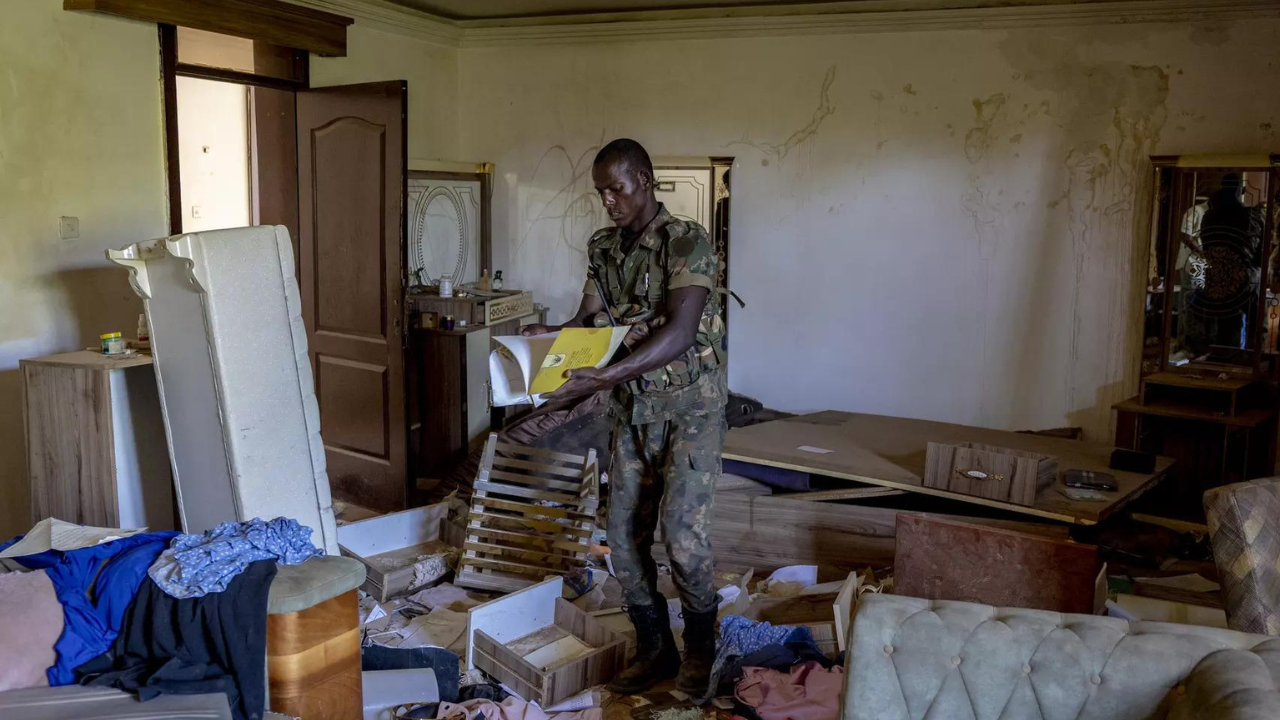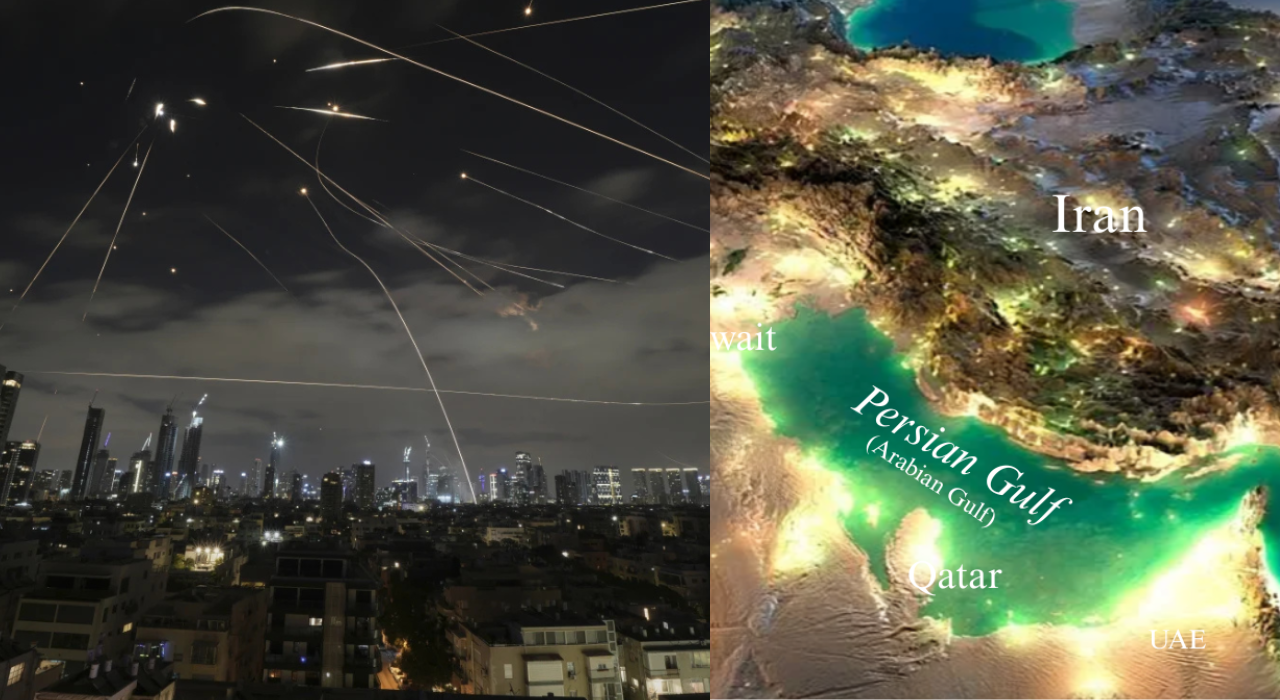Opinion: Indian Drugs, Pak Terrorism, China: Inside The Latest US Intel Report

Join our WhatsApp Community to receive travel deals, free stays, and special offers!
- Join Now -
Join our WhatsApp Community to receive travel deals, free stays, and special offers!
- Join Now -
The release of the first combined intelligence assessment of the United States is no small thing, given that there is a new administration under an ebullient President, Donald Trump. Add to that the fact that it comes under the leadership of Tulsi Gabbard, only the second woman to be the Director of National Intelligence. And no, it doesn't mean anything at all that she's a practising Hindu. That's not how it works. This is the combined report of 18 intelligence agencies, and that's what matters.
The Intel On India
First off, the issues flagged about India. The media called Gabbard out for linking India to the serious problem of fentanyl, a synthetic opioid that, while legitimately used to treat severe pain, has become the leading drug crisis in the US, which President Trump is taking very seriously and using for all manner of things, including sanctions. In her Congressional statement, Gabbard did refer to India and China as sources for ‘dual use' chemicals that feed the drug trade. But this is an old issue that has seen Delhi cooperating with US agencies in dealing with groups that had shifted from China to India, at least since 2018, as Beijing cracked down on the trade that supplied Mexican cartels. India has since banned these precursors, and a number of Chinese were arrested too. But clearly, more needs to be done. Just recently, a Hyderabad firm in an upscale neighbourhood was indicted for openly selling precursors.
Cracking down on this is vital, since India already has a serious drug problem that constitutes a public health crisis. Back to the DNI report, which under the Biden administration had a lot more to say on India, including references to ‘alleged' Pakistan support to terrorism and Prime Minister Narendra Modi's willingness to use force against “perceived or real Pakistani provocations”. Certainly, the present assessment is far better for India.
Pakistan Gets A Break
Not that Pakistan didn't get what it wanted. Clearly, the arrest, apparently with the support of Pakistani authorities, of the alleged ‘mastermind' of the 2021 Abbey Gate bombing in Kabul that had killed 13 Americans, was a nice play by Rawalpindi. That Mohammed Sharifullah, aka 'Jafar', was arrested quite conveniently on the ‘Pakistan-Afghanistan' border—with the onus being placed on Afghanistan—demonstrates Pakistan's proven habit of pulling terrorists out of a hat whenever a suitable occasion presents itself. That has been done earlier too, what with repatriating Chechens to Russia and Uyghurs to China.
However, US intelligence officers are hardly novices when it comes to Pakistan. Islamabad's intel has been waging a long campaign, including in US academic institutions, to link the Tehrik-e-Taliban Pakistan (TTP) to al Qaeda and the Islamic State—in UN documents too—and project it as an ‘international threat'. In a part win, the DNI's latest assessment names the group as a ‘potential future threat', and does not mention Pakistan beyond that. That's a relief for an embattled Pakistan army, but not quite enough. Expect more TTP attacks in the subcontinent that tie it up firmly to al Qaeda or the Islamic State.
And The Chinese Wind
Though the issue of non-state actors of all kinds takes precedence in the report, the section on China is far more hard-hitting than the earlier reports. Where the 2024 document had outlined China's various weaknesses, the present report states boldly that “the PLA has the capability to conduct long-range precision strikes with conventional weapons against the Homeland's periphery in the Western Pacific, including Guam, Hawaii, and Alaska”. It also adds realistically that the US should not be involved in a Taiwan conflict, as such an event would result in “disrupt[ing] U.S. access to trade and semiconductor technology critical to the global economy…significant and costly consequences to US and global economic and security interests”. In other words, this is a pitch for the militarisation of Greenland and for a strengthening of the Indo-Pacific, though it says nothing about the Quad. Those conclusions are to be drawn by policymakers, not intel providers.
Russia Is Still A Threat. So Is Hamas
On Russia, the intelligence argument that the Russia-Ukraine war has pushed Moscow towards Beijing, forming a direct threat to the US, is the most significant conclusion that will be welcomed by most Asian states that have some strategic sense. This argument was never accepted by the earlier administration.
However, the document is far from writing off the Russian threat. It notes that despite the long war, Moscow has shown unexpected resilience and continues to remain a strategic threat to the US, in terms of not just its nuclear capabilities but strong disinformation capabilities too, designed to divide the US and its allies.
Then there's the view on Iran, which notes its degraded capabilities with regard to Hamas and others, as well as its regional environment. Overall, the intelligence line is much softer on the Teeran threat, which was hyped by the earlier administration. Meanwhile, Trump's offer of a new nuclear deal has been accepted by Iran. This will go via Oman, rather than the UAE, which had been the first line of approach for Washington. Trump's threat that “bad, bad things” will happen to Iran is backed by the airstrikes against the Houthis, another Tehran prop. There's no mistaking that message.
Intel, meanwhile, is far from writing off Hamas. They expect the region to remain ‘volatile'. Translate that into the finding that Washington's backing of Israel in clearing out Gaza will continue, even as Arab states squabble among themselves.
A Violent World
Overall, the DNI report points to the expectation of a more violent world, where the threat arises from cooperation between ‘adversaries' like Russia, China, Iran and North Korea, and possibly others. That was not ever foreseen in the 2024 report, though all the markers indicating it were there. Intel was, after all, well aware of Chinese assistance to Russia, and the relationship between Iran, China and Russia. For India, as with much of the rest of the Global South, this focus on ‘adversarial cooperation' puts many countries at the risk of being seen as close to one or the other. But so far as is evident, the thrust of Trump's policy is to splice Russia away from China as rapidly as possible, even while holding out a branch—although a very sharp one—to Iran. That will leave China isolated, only with its ‘all-weather friend' Pakistan. That last link may change too, as Rawalpindi is eager to get US drones on the ground, if not boots.
Meanwhile, it is vital that India gets its stringent counter-drug policies effective on the ground so that a range of dangerous chemicals are actually stopped rather than being quietly sold to farmers.
The Indian government might also want to make its own intelligence assessment, which will probably be the most unenviable task of the year. The global situation is a shifting, murky river. Nothing at all is certain. A little more in terms of resources for intel wouldn't hurt.
(Tara Kartha is a former director of the National Security Council Secretariat)
Disclaimer: These are the personal opinions of the author
What's Your Reaction?
 Like
0
Like
0
 Dislike
0
Dislike
0
 Love
0
Love
0
 Funny
0
Funny
0
 Angry
0
Angry
0
 Sad
0
Sad
0
 Wow
0
Wow
0






















































